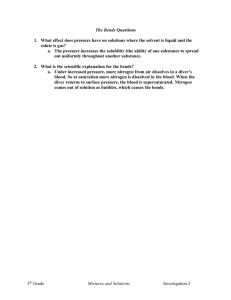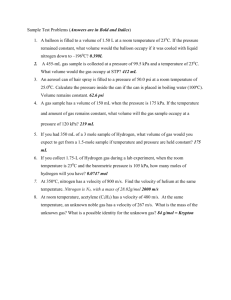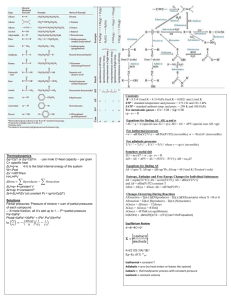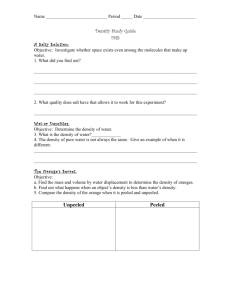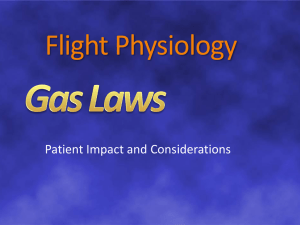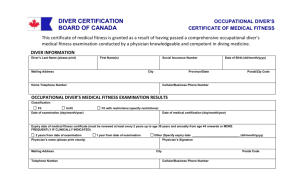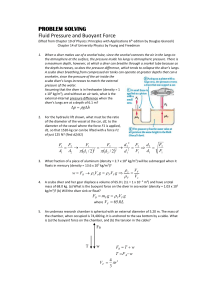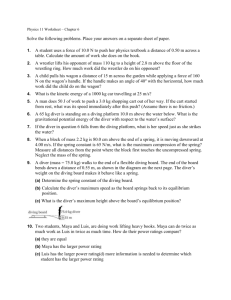Exercise3
advertisement
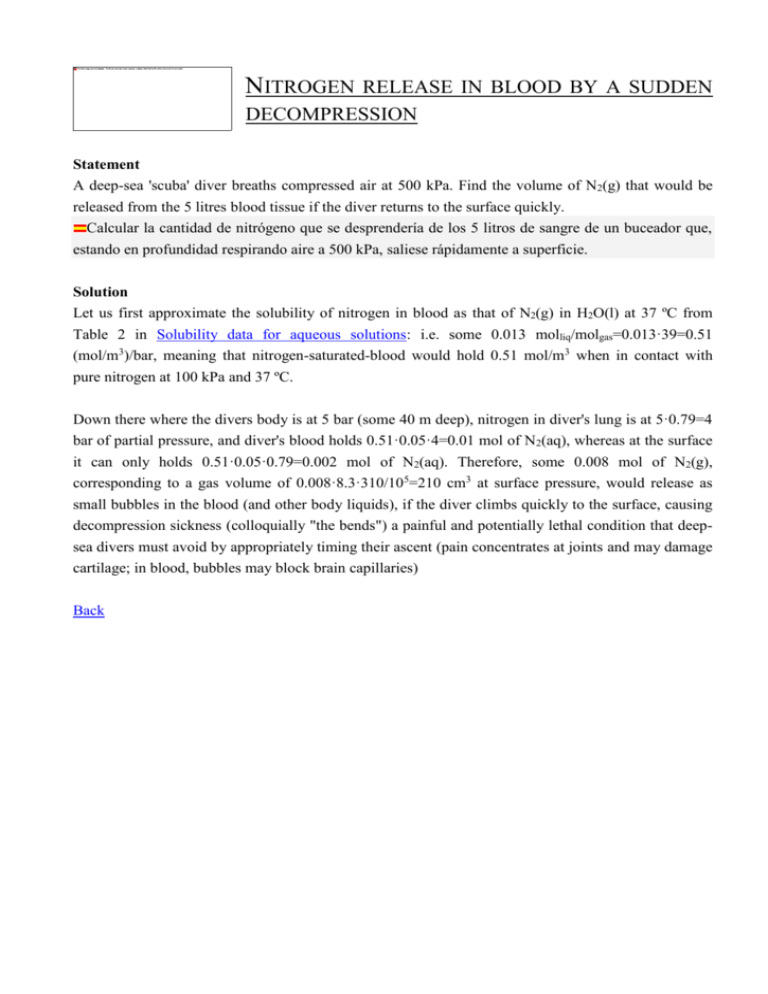
NITROGEN RELEASE IN BLOOD BY A SUDDEN DECOMPRESSION Statement A deep-sea 'scuba' diver breaths compressed air at 500 kPa. Find the volume of N2(g) that would be released from the 5 litres blood tissue if the diver returns to the surface quickly. Calcular la cantidad de nitrógeno que se desprendería de los 5 litros de sangre de un buceador que, estando en profundidad respirando aire a 500 kPa, saliese rápidamente a superficie. Solution Let us first approximate the solubility of nitrogen in blood as that of N2(g) in H2O(l) at 37 ºC from Table 2 in Solubility data for aqueous solutions: i.e. some 0.013 molliq/molgas=0.013·39=0.51 (mol/m3)/bar, meaning that nitrogen-saturated-blood would hold 0.51 mol/m3 when in contact with pure nitrogen at 100 kPa and 37 ºC. Down there where the divers body is at 5 bar (some 40 m deep), nitrogen in diver's lung is at 5·0.79=4 bar of partial pressure, and diver's blood holds 0.51·0.05·4=0.01 mol of N2(aq), whereas at the surface it can only holds 0.51·0.05·0.79=0.002 mol of N2(aq). Therefore, some 0.008 mol of N2(g), corresponding to a gas volume of 0.008·8.3·310/105=210 cm3 at surface pressure, would release as small bubbles in the blood (and other body liquids), if the diver climbs quickly to the surface, causing decompression sickness (colloquially "the bends") a painful and potentially lethal condition that deepsea divers must avoid by appropriately timing their ascent (pain concentrates at joints and may damage cartilage; in blood, bubbles may block brain capillaries) Back
